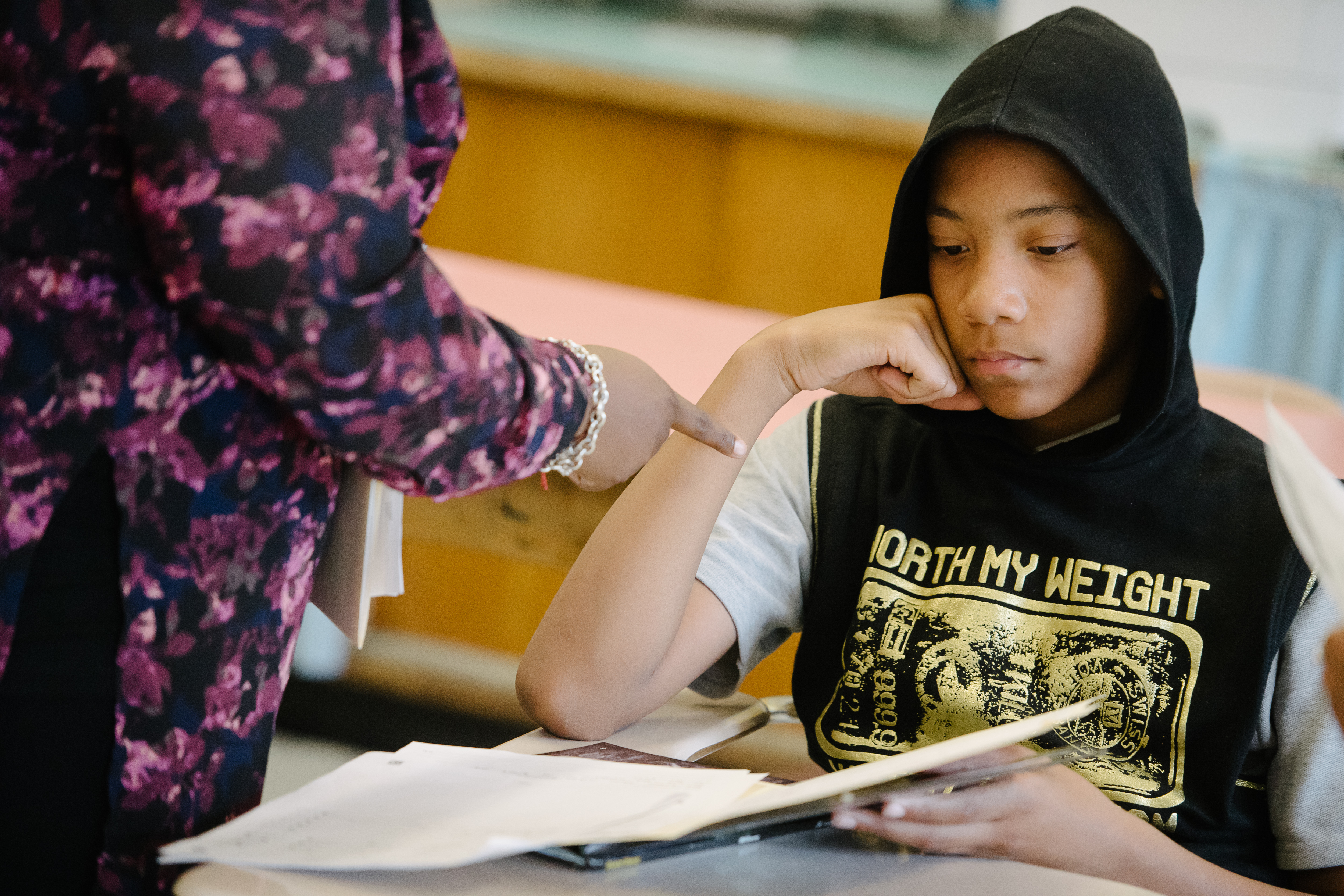Stereotype Threat: What is it?
 By Catherine Good, Ph.D., Senior Research Scientist
By Catherine Good, Ph.D., Senior Research Scientist
This is blog one in our three-part series about stereotype threats.
In previous posts, we explored the ways that implicit biases can color the judgments we hold of our students, and learned concrete steps to take to reduce our biased responses. But our stereotype-driven behaviors and judgments aren’t the only ways cultural stereotypes create inequity in education. Cultural stereotypes about lack of intelligence and ability also directly impact students’ engagement in school, learning and achievement. This phenomenon, called stereotype threat, has been shown to contribute to the achievement gap between black and white students, between rich and poor students and between boys and girls in math (Aronson, 2002). In fact, any person who faces stereotypes suggesting limited ability could be vulnerable to stereotype-based deficits.
In this three-part series our goal is to:
- Build a deeper understanding of what stereotype threat is
- Examine how it can manifest in classrooms
- Share research-based solutions easily implemented in schools to help students overcome stereotype threat
What is stereotype threat?
Stereotype threat is the unpleasant apprehension that arises when a person becomes aware that someone has a biased, negative view of his or her ability and that ability is relevant to the situation and therefore potentially confirmable. The extra burden of having to learn and perform under the specter of a negative stereotype creates increased anxiety and task-related worries, decreased engagement in learning, impaired learning outcomes and ultimately, impaired performance. For example, the idea that women and girls are less capable in math than men and boys can lead to reduced performance on math tasks, especially when those tasks are highly important, such as the the math portion of the SAT or the AP calculus exam. This is because stereotyped students experience extra pressure that their non-stereotyped peers do not – namely, to prove the stereotype wrong. The extra drive to excel and not justify the low expectation embedded in the stereotype has the ironic effect of undermining the relaxed concentration that is necessary for optimal performance. In such situations, the achievement gap widens.
Awareness of cultural stereotypes
Now let’s dig a little deeper into what it means to be on the receiving end of stereotypes about race, gender, socioeconomic status and more. For starters, It doesn’t take much to evoke stereotype threat; awareness is enough. In other words, a student just has to be aware that a negative cultural stereotype is directed his or her way for it to adversely impact learning and achievement. The student doesn’t have to believe it, buy into it or in any way internalize the stereotype that part of his or social identity is considered by some to be “less than” when compared to others. In America, there is no shortage of these stereotypes: girls are less capable than boys in math, black students are less smart than their white counterparts, poor children have less potential than rich children. In 1992, Mattel famously released Teen Talk Barbie who spoke several phrases including, “Math class is tough!” These messages have become embedded within the fabric of our culture and awareness can take root early in a child’s development.
Situational Relevance
Many people mistakenly believe that stereotype threat is a pervasive and ever-present burden that students of color, girls and poor children carry around with them. This perspective situates the problem within the individual, making stereotype threat seem intractable or up to individuals to overcome on their own. Moreover, this way of thinking supposes that only those who are chronic targets of stereotypes are vulnerable to their effects. For example, it supposes that black students who face numerous and entrenched stereotypes about their intellectual capabilities move from situation to situation toiling under the weight of low expectations, whereas white students, who arguably face few negative stereotypes about their abilities, would not suffer from stereotype threat. But we know from research that this is not true! Even white males can underperform on a math test when the test is presented as an attempt to better understand why Asians are superior in math (Aronson, et al., 1999). Stereotype threat is a situational predicament. As such, any situation in which a stereotype is relevant raises the possibility that the stereotype could be confirmed by one’s performance.
Apprehension
There are various mechanisms by which stereotypes lead to underperformance. One is increased anxiety. For students vulnerable to stereotype threat, the negative stereotypes create a level of apprehension, worry and concern that their non-stereotyped peers do not contend with. This extra concern – whether a concern about how others may judge you or how you may judge yourself if performance slips – manifests physiologically and neurologically. In one study, black students had elevated blood pressure under conditions of stereotype threat and this elevated blood pressure was connected to their decreased performance on an academic task. Other studies have shown that stereotype threat actually depletes executive functioning of the brain. Specifically, under stereotype threat, student’s working memory resources – the ability to hold onto, process and manipulate information – were depleted.
These are just a few of the impacts that negative stereotypes can have on your students. What other examples have you noticed in your classroom? Share your thoughts on Twitter with @Turnaround #The180. Next week, we will discuss the consequences of stereotype threat and the impact they can have on your students’ motivation, engagement, learning and performance.

Share This Story